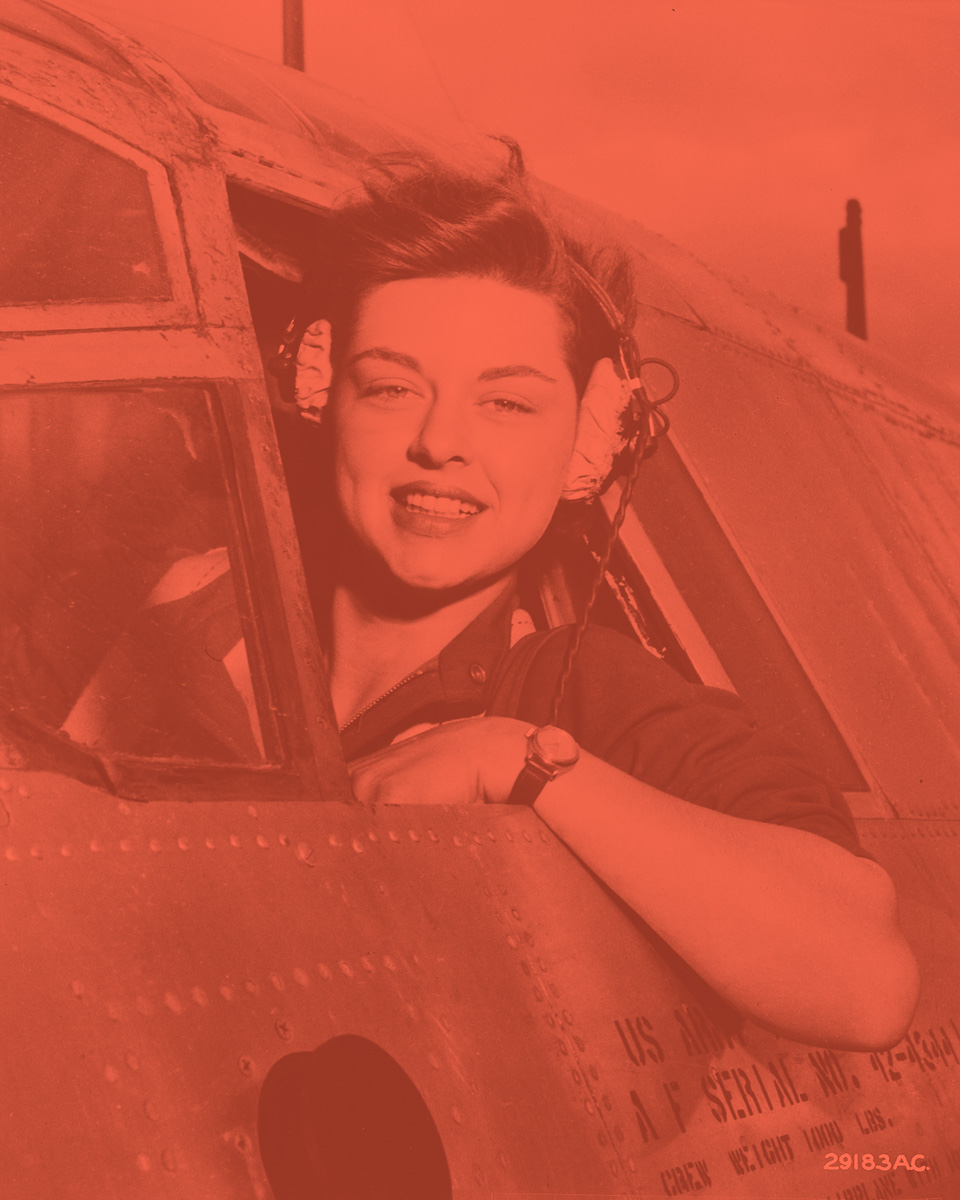The WASP
- Internationnal
- History

They were the pioneering organizations of civilian female pilots, employed to fly military aircraft under the direction of the United States Army Air Forces during World War II. The WFTD and WAFS were merged on August 5, 1943, to create the paramilitary WASP organization. The female pilots of the WASP ended up numbering 1,074, each freeing a male pilot for combat service and duties. They flew over 60 million miles in every type of military aircraft.[1] The WASP was granted veteran status in 1977, and given the Congressional Gold Medal in 2009.
Over 25,000 women applied; however, only 1,074 were accepted into the WASPs. The accepted women all had prior experience and pilot's licences. Of those accepted, the majority were white; there were only two Mexican American, two Chinese American women and one Native American woman. Due to the racial controversy at the time, the only African American applicant was asked to withdraw her application.
Creation of the WASP
By the summer of 1941, Florida native Jacqueline "Jackie" Cochran and test-pilot Nancy Harkness Love, two famous women pilots, independently submitted proposals to the U.S. Army Air Forces (the forerunner to the United States Air Force) to use women pilots in non-combat missions after the outbreak of World War II in Europe.[5] Their motivation was to free male pilots for combat roles by employing qualified female pilots to ferry aircraft from factories to military bases, and to tow drones and aerial targets. Prior to Pearl Harbor, General Henry H. "Hap" Arnold, commander of the USAAF, had turned down both Love's 1940 proposal and that of the better connected and more famous Cochran, despite the lobbying by Eleanor Roosevelt. But he essentially promised the command to Cochran, should such a force be needed in the future. While the U.S. was not yet fighting in World War II, Cochran had gone to England to volunteer to fly for the Air Transport Auxiliary (ATA).[6] The ATA had been using female pilots since January 1940, and was starting to also train new pilots. The American women who flew in the ATA were the first American women to fly military aircraft.[6] They flew the Royal Air Force's frontline aircraft—Spitfires, Typhoons, Hudsons, Mitchells, Blenheims, Oxfords, Walruses, and Sea Otters—in non-combat roles, but in combat-like conditions. Most of these women served in the ATA during the war. Only three members returned to the U.S. to participate in the WASP program. The U.S. was building its air power and military presence in anticipation of direct involvement in the conflict, and had belatedly begun to drastically expand its men in uniform. This period led to the dramatic increase in activity for the U.S. Army Air Forces, because of obvious gaps in "manpower" that could be filled by women. After the attack on Pearl Harbor, it became evident there were not enough male pilots.
To those most involved within the new Ferrying Division of the Air Transport Command (ATC), the numbers were painfully obvious. Col. William H. Tunner was in charge of acquiring civilian ferry pilots. He decided to integrate a civilian force of female pilots into the AAF, after speaking with Major Robert M. Love, ATC staff officer, and his wife Nancy. Convinced of the feasibility of the program by Mrs. Love, who had a Commercial Pilot License, he asked her to draw up a proposal, unaware that Arnold had shelved a similar proposal by Tunner's superior, Maj. Gen. Robert Olds.
Cochran had committed to go to Great Britain in March 1942 for the trial program of female pilots with the ATA. She used her association with the President and Mrs. Roosevelt to lobby Arnold to reject any plan that did not commission women, and set up an independent organization commanded by women. Ironically, Tunner's proposal called for commissioning women in the WAACs, but was turned down after review by Arnold.






